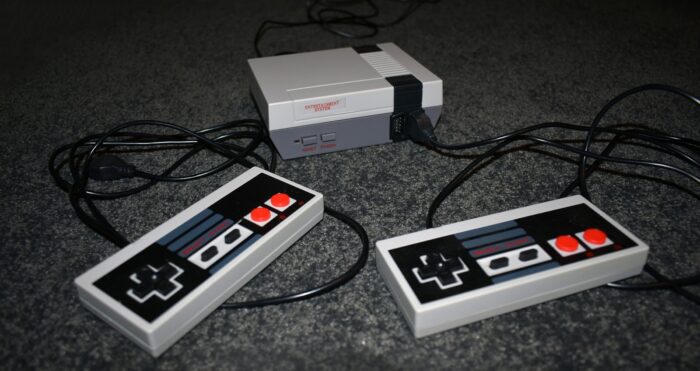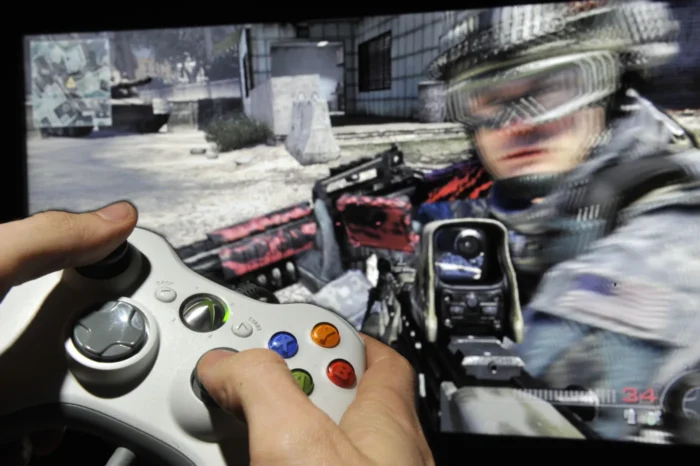
Mobile gaming has become popular with gamers around the globe , ushering in a new world of mobile-specific games. From Animal Crossing to Granny, there’s truly something for everyone. In this article, we look at how 3D gaming has evolved over the years, including its recent shift to mobile devices.
Smartphone gaming stats
When you think about your favorite game, do you picture yourself playing it from your ‘battle station’, or does a standalone console seem more appealing? For an increasing number of gamers, the answer to that question is ‘on my phone’. As the cost of smartphones from quality providers decreases, access to mobile gaming technology is on the rise. In 2022, for example, mobile games generated almost 50% of video gaming revenue globally. In the US alone, there are more than 150 million mobile gaming users.
While mobile gaming might still be seen by some as a casual way to game, it has become a popular method for millions. The revenue shows that this isn’t necessarily a casual gaming option for the people playing the games. Users have no problem spending almost as much money on mobile games as they do on console or PC titles from AAA producers.
With the above in mind, let’s take a look at how 3D gaming content has evolved over the years and how its recent shift to mobile gaming is increasing its accessibility.
Gaming in the 1980s

Video games hit the mainstream in the 1980s. This was the first time that users had access to dedicated consoles, with some of the more popular including:
- Sega SG-1000 (1983)
- NES Family Computer (1983)
- Sega Master System (1985)
- Atari 7800 (1986)
- PC Engine TurboGrafx-16 (1987)
- Sega Genesis (1987)
You may be familair some of the names in that list. Some of today’s most popular video game console developers recognized the industry’s potential at the start and dominated the market early. Even some of the names you might not have recognized on the list influenced the way that we play video games today. The PC Engine TurboGrafx-16, for example, is widely considered to be the first ‘hybrid’ gaming solution. It gave users the ability to play games on a machine with enough power to also offer routine computer functions. This is a common feature today, but was much less known in the 80s.
Gaming in the 1990s
The video gaming industry cemented its place in popular culture in the 1990s. This was the decade when simple sprite-based graphics transformed into the more familiar 3D graphics we experience today. This decade also saw the rise of some of the most enduringly popular genres of video games, including MMOs, survival horror, and first-person shooters. Video game consoles also continued to evolve, with some of the most popular including:
- Super NES (1990)
- Sega CD (1991)
- Sega Saturn (1994)
- Sony PlayStation (1994)
- Nintendo 64 (1996)
- Sega Dreamcast (1998)
The 1990s also saw the introduction of some video game series still popular today, including Pokémon, which has expanded into the mobile gaming space in recent years with Pokémon GO.
Gaming in the early 2000s

The early 2000s saw video games begin to shift increasingly toward PCs rather than console-only releases. Overall, however, consoles remained king from 2000 to 2010, with some of the most popular including:
- PlayStation 2 (2000)
- Nintendo GameCube (2001)
- Xbox (2001)
- Xbox 360 (2005)
- PlayStation 3 (2006)
- Nintendo Wii (2006)
The 2010s and 2020s (to date) have seen a further shift from dedicated consoles to PC titles and mobile gaming. These advancements in technology have also played a significant role in the evolution of real-time games, such as those at online casinos. In the past, live casino games were limited to basic graphics and low-quality video streams, which often made the experience feel disconnected from the actual gameplay. With the improvements in graphics, sound and video, live casino games are now far more immersive for players. Taking place in realistic studios with professional dealers, live casinos are now able to deliver an experience which is close to a traditional land-based casino.
The rise of esports is also worth mentioning when discussing gaming in the early 2000s. Though esports had been around since the 1990s, the 2000s saw a significant increase in popularity and professionalization, with games like Starcraft and Counter-Strike becoming staples of competitive gaming. This trend has only continued in the years since, with esports now a massive industry with its own leagues, teams, and tournaments, drawing in millions of viewers from around the world.

Mobile gaming
In 2011, just 35% of Americans owned a smartphone, according to Pew Research Center. By 2021, that number was at a staggering 97%! The rapid adoption of the smartphone naturally led to a rise in mobile gaming. In fact, consumer spending on mobile games increased dramatically from 2014 to 2022, whereas it largely remained the same on PC gaming, console gaming and portable console gaming. The reason is pretty simple. The vast majority of Americans already own a smartphone, which gives them access to gaming in a way that costly PC and dedicated consoles do not.
What do you think about the evolution of video games? From existing primarily on dedicated consoles to becoming an increasingly common part of everyday life, the industry has experienced some incredible shifts over the years.
With the rise of mobile gaming, the gaming industry has become more accessible and inclusive. Mobile games are often free or low-cost, making them more financially accessible for many people. Additionally, the convenience of playing on a smartphone means that gaming can be enjoyed anytime, anywhere, allowing for quick bursts of entertainment during downtime. As technology continues to evolve, it will be interesting to see how the gaming industry adapts and changes to keep up with the changing times.
















